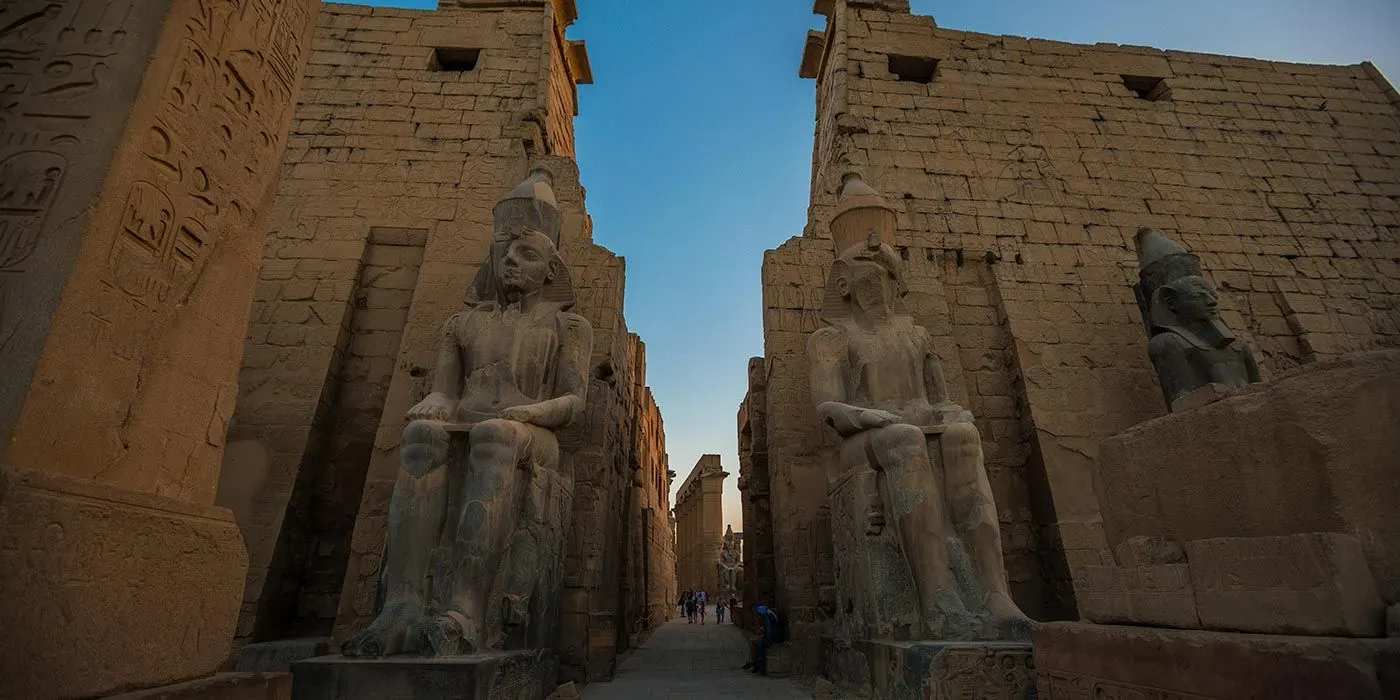Facts and history of the Luxor Temple
Ancient Egypt has always produced a great fascination. The great monuments such as the enormous pyramids of Giza, the majestic tombs of the Valley of the Kings or the mummies that are preserved in the Cairo Museum, have fed the imagination of those who enjoy history and the beauty of ancient art. Today we make a stop at the Luxor Temple to learn more about its history and facts.
What is and where is the Luxor Temple?
It is one of the most important temples of Ancient Egypt and its ruins are located in the city of the same name, which is located in the central region of the country, on the banks of the Nile River. Its work is mainly due to two important pharaohs, Amenhotep III and the great Ramses I: thats why we can see two large effigies at the entrance to the Temple.
Who built luxor temple?
It was built mainly during the 18th and 19th dynasties of the New Kingdom, but continued to be modified and expanded until the Ptolemaic period. It began by order of Amenhotep III (or Amenhotep III), and was completed in its original form during the government of Ramses II, around the year 1250 BC. c.

Why was the temple of luxor built
It is dedicated to the great god Amun-Ra, his wife Mut and his son Jonsu, who represent the triad of Thebes, as well as being the center of one of the most important religious festivals of his time, known as Opet, which was celebrated during the second month of the annual flood of the Nile. During this festival the temple, profusely decorated with bas-reliefs that can still be seen on its columns and walls, became the focal point of the festivities, which included a procession from the temple of Karnak to Luxor.
Secrets of the Luxor Temple
One temple, various cults
The temple has undergone a multitude of developments since what was originally a temple to worship the most important god of the Egyptian pantheon, Amun-Ra, was transformed over the years to house the worship of other deities. During the Ptolemaic era, Serapis, a syncretic god who combined Egyptian and Greek traditions, was venerated. Later, during the time of Roman rule, a chapel was first installed in honor of Augustus, emperor who was deified and later, when the Roman legion turned the temple into a castro, it housed the cult of other Roman divinities.
Centuries later, with the advent of Christianity and the acceptance of this religion by the Empire, churches were built inside the great temple compound and remains of one that was located in the courtyard of Ramses can still be seen today. II, on which a mosque dedicated to Abu El-Hagag, a local saint whose relics are kept inside, was later installed.

Luxor Temple statues
In short, between the passage of Egyptians, Greeks, Romans, Christians and Muslims, this temple has had cult activity for more than 3,500 years and today its mosque is still active, so we can hear the call to prayer while we contemplate the ruins of this pharaonic temple.
And the other obelisk?
If we look at luxor temple main façade, we can see that in front of the pylons, there are two seated statues of Ramses II flanked by an obelisk and the pedestal of what should be another obelisk. this obelisk is currently in the Plaza de la Concorde in Paris and which was donated by the Egyptian governor Mehmet Ali in 1830 at the request of the French Egyptologist Jean François Champollion.
Sphinx statues in the Egyptian Temple of Luxor
Continuing outside, we will observe that the avenue that develops in front of its main entrance is flanked on both sides by rows of sphinxes with ram and human heads and that reach the doors of the most important sanctuary in Ancient Egypt, the Temple of Karnak. In total, 3 kilometers of avenue with around 1,400 sphinxes that constituted a processional passage known as the Avenue of Sphinxes

To get to know this wonder, all you have to do is prepare a wonderful trip through the enigmatic country of the Nile. So that you can enjoy it with complete peace of mind, don't forget to choose from a wide range of river nile cruises with us that allows you to visit Luxor Temple.



